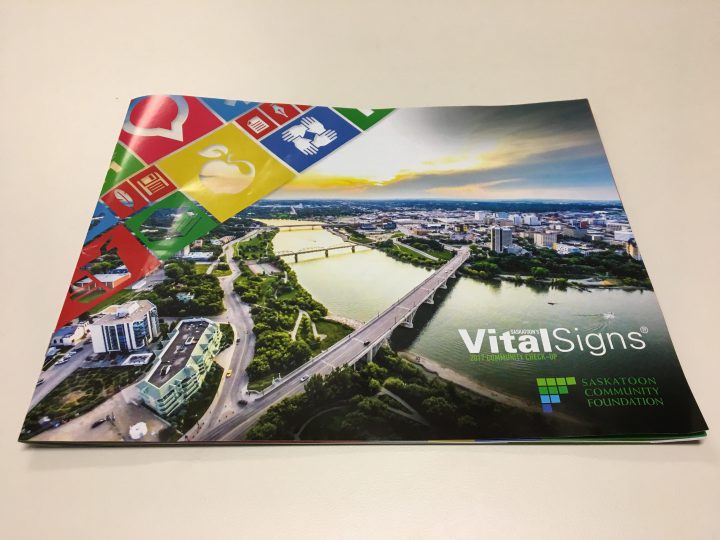It’s a snapshot of Saskatoon.

The 2017 Vital Signs report says Saskatoon is an engaged community, but there is still work to be done.
“We wanted to adopt a community building model, not just provide data by itself,” Carm Michalenko, executive director of the Saskatoon Community Foundation (SCF), said.
The internationally recognized report is made up of data collected from community groups and organizations within Saskatoon through consultations, surveys, and interviews. The SCF created a committee with representation from across the city, to bring forth different perspectives than the 2015 report, which focused primarily on data from Statistics Canada.
“We represent the charitable sector, but the business sector is very important to the health of our community; the arts, the environment, social services, all the different facets of our community,” Don Ewles, grants and communications manager for the SCF, said. “It was out of bringing those people together that we arrived at the idea of having the report focused through Reconciliation Saskatoon’s framework.”
The new model allowed the SCF to deliver a fuller story using the data provided to create a dialogue on how to strengthen the community to help move Saskatoon forward.

Get daily National news
The report focused on four key areas including a community sense of belonging, how we respect the environment and if we share a high quality of life.
“There’s lots of good news,” Ewles said. “We’re a strong city, we still have a strong economy; we have a strong sense of belonging and inclusion, and yet we know that’s not true for everybody.”
- Quebec premier calls on Bloc Québécois to help topple Trudeau government
- Americans can now renew passports online. Canadians are still waiting
- Pablo Rodriguez quits Trudeau cabinet to seek Quebec Liberal leadership
- Telus call centre workers in Ontario facing ‘extreme stress’ as they fight Quebec move
The report shows that over 72 per cent of Saskatoon residents feel a strong sense of community, and that Saskatoon is becoming more culturally diverse. But, only 7 per cent of local families have access to culturally inclusive and affordable healthcare.
“It’s time for us to start looking at that and addressing it, so that everybody can play an equal role and share an equal part of the high quality of life that we enjoy here in Saskatoon,” Ewles said.
The SCF began to incorporate reconciliation in their 2015 report, broadening the focus in this year’s outline. According to the data, 80 per cent of Indigenous people say the highest priority in quality of life is rebuilding the foundations of their culture and sense of identity.
“People are participating in various programs and activities that they haven’t in the past when it comes to reconciliation,” Michalenko said. “I think people are mobilizing in our community when it comes to reconciliation and I think that’s a really good stat to have.”
Over 4,000 people attended the Rock Your Roots Walk for Reconciliation, a 48 per cent increase between 2016 and 2017. There was also a 34 per cent increase in attendance at the Wichitowin Aboriginal Engagement Conference.
“Because we have an engaged community; they are participating, they are learning, we’re trying to understand the various cultures,” Michalenko said. “Being part of it and participating; it really does show and come through in this report but there’s always room to grow.”






Comments